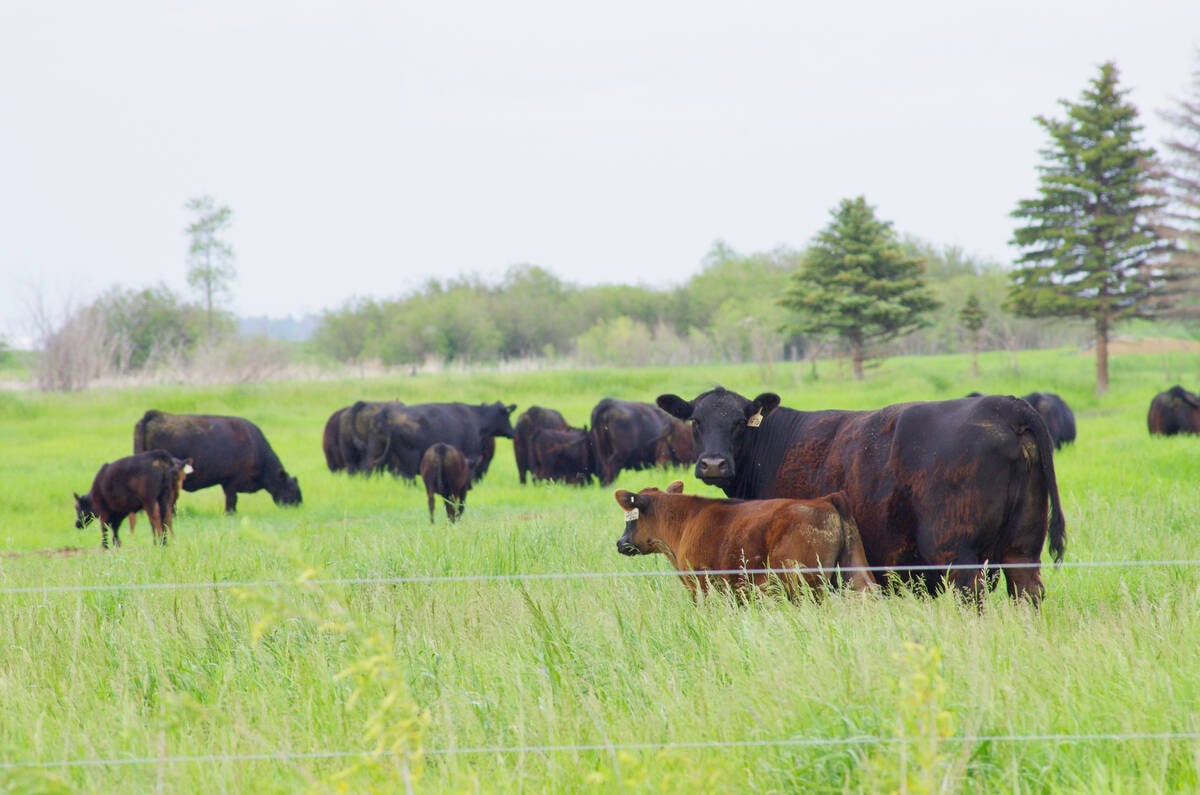As ranchers prepare to buy or sell calves this fall, specialists are weighing in on the value of preconditioning and what it means for better beef.
They agree that the practice — which requires feeder calves be vaccinated, castrated, de-horned, experienced in eating from a bunk and weaned for 30 to 45 days before sale — results in more efficient weight gains and healthier animals.
“It doesn’t have an effect on meat quality, but it does improve the immune system of the animal because there will be less treatments and they’ll recover quicker if they do get sick,” said Karin Schmid, a beef production specialist with the Alberta Beef Producers.
Read Also

Tick research from the University of Manitoba focuses on insects and testing
Manitoba researchers are looking into the effects of tick and fly disease in cattle.
“You will get a better rate of gain when they initially go into the feedlot and that can lower your costs.”
But some cattle producers are more rigorous with their preconditioning programs than others, said Schmid.
For example, some ranchers may only vaccinate their calves while others carry out all the recommendations.
“Not everyone has the same definition,” she said. “The problem with having it loosely defined is if I buy calves, I may expect them to be weaned, but I could find out they were just vaccinated prior to getting on the truck.”
Buyers usually have to take the seller’s word that the calves have been preconditioned.
“In a low margin business, it’s very difficult to believe what you’re told when you could have a wreck,” Schmid said.
To help clear up the situation, it’s now recommended that sellers document calves back to herds of origin, include veterinarians in discussions to verify vaccinations and participate in recognized preconditioning programs. This way, buyers can feel confident when purchasing.
As well, more producers are developing one-on-one relationships with feedlot operators to help build trust, Schmid added.
“Where we’re seeing more hold is in retained ownership and direct marketing,” she said. “They’re putting more pounds at home before they sell them so they can see those benefits.”
Still, premiums are hard to measure for Oliver Schunicht, a veterinarian who also preconditions his calves on his cow-calf operation near Okotoks, Alta.
Although he said he personally sees gains, it may not make sense for every farmer.
“Every individual operation is different,” he said. “I’ve got facilities, I feed a good ration and I have all the time to do that. If you’ve got 35 head and are mainly a grain farmer, to take time off your grain and focus on your calves, it may not make as much sense.
“As for the premiums, it’s hard to say. I probably get some, but as for exact amounts, it’s a hard number. It’s something I struggle with all the time.”
He said a standardized preconditioning program might help, where premiums are guaranteed and producers who take part have their programs verified and audited.
“It’s such a loosely defined thing,” he said, “and we don’t have a good definition and certification.”
While Schmid said such a certification program could return if it’s not costly and includes premiums, she highlighted the importance of building trusting relationships.
“It takes a lot of work on everyone’s part,” she said. “It’s not a new idea and it’s not rocket science, but it all comes down to what works in individual operations.”


















